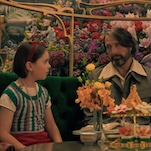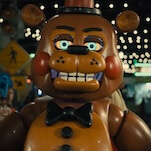Come And See

Produced to commemorate the 40th anniversary of Russia's triumph over the Germans in WWII, Elem Klimov's searing Come And See paints a real historical event as an expressionist nightmare, full of abstract horrors and heightened surrealism. In this way and others, it's the Russian cousin to Apocalypse Now, but Klimov's episodic journey of the soul is framed instead as a coming-of-age story, told through the widened eyes of a teenage boy who wakes to the existence of evil in the world. Aleksei Kravchenko (whose frozen, stunned visage was reportedly induced in part by on-set hypnotic suggestion) plays the only son of a peasant family in the border province of Byelorussia, where Nazi soldiers burned more than 600 villages and massacred their inhabitants. After digging out an old rifle from a sandy gravesite, Kravchenko joins a motley resistance force in the forest, but the other soldiers, recognizing his youthful inexperience, leave him behind when they go off to fight. His wanderings lead him to a teenage girl (Olga Mironova) who seems almost imagined, but their quiet, playful moments together are broken by an onslaught of German paratroopers and bombs descending from the skies. When he returns to his village the next day, he finds his family and neighbors slaughtered, and he joins the survivors as they're shepherded to another village, where most are to be burned alive in an emptied church. Cheered on by sadistic Nazi soldiers, some of whom take pictures for posterity, the mass slaughters captured unblinkingly in Come And See serve as a blunt reminder of the recent past. But this documentary-like realism is made all the more powerful by the boldly poetic depiction of war that precedes it. Klimov's dazzling visions from the boy's point of view owe a debt to the first-person camera in Andrei Tarkovsky's classic debut My Name Is Ivan (a.k.a. Ivan's Childhood). His impressions are unforgettable: the screaming cacophony of a bombing run broken up by the faint sound of a Mozart fugue, a dark, arid field suddenly lit up by eerily beautiful orange flares, German troops appearing like ghosts out of the heavy morning fog. A product of the glasnost era, Come And See is far from a patriotic memorial of Russia's hard-won victory. Instead, it's a chilling reminder of that victory's terrible costs.








































